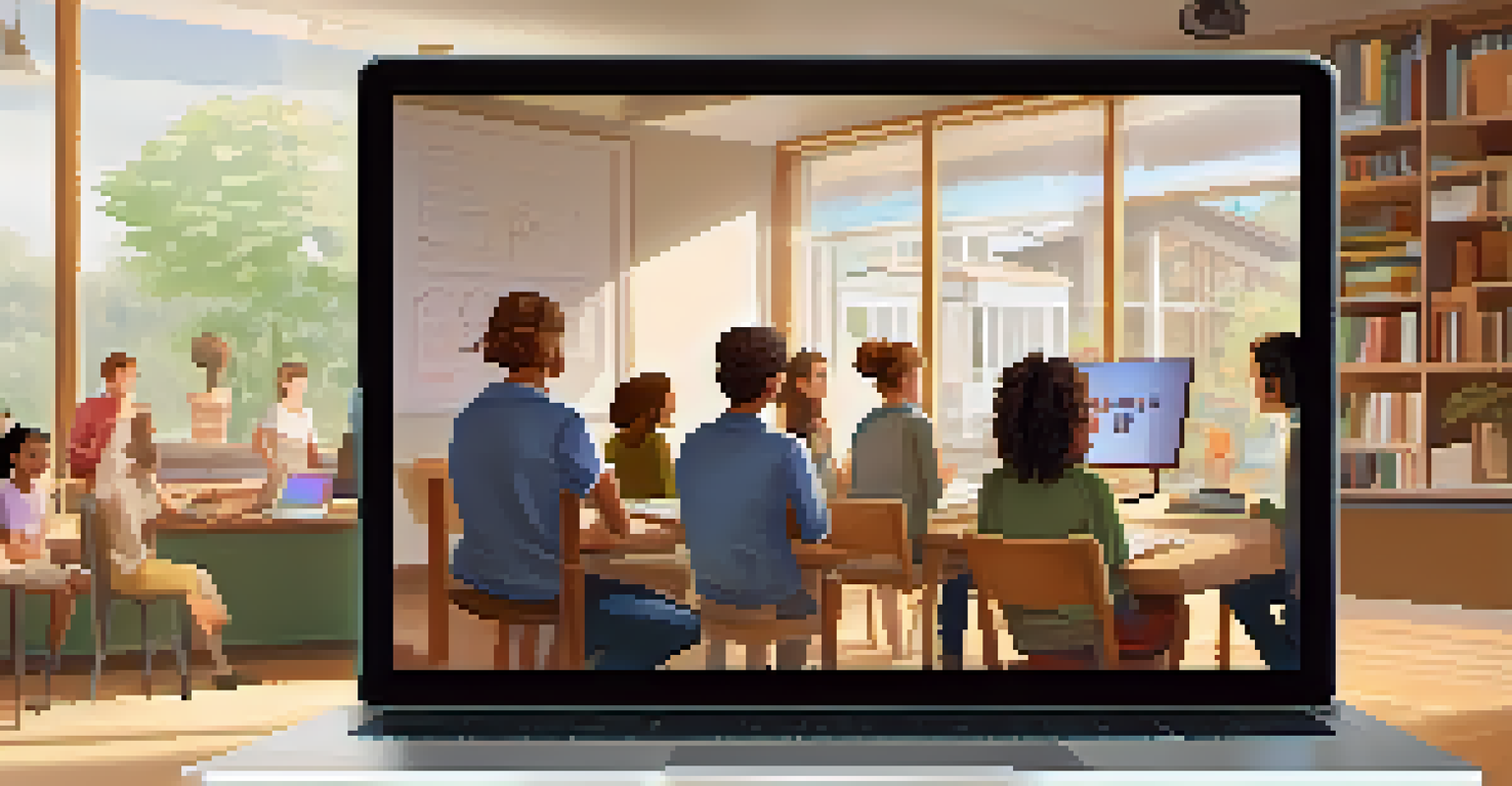Virtual Classroom Etiquette: Best Practices for Students

Dress Appropriately for Virtual Classes
Just because you're not in a physical classroom doesn't mean you can wear your pajamas! Dressing appropriately sets a professional tone and helps to get you in the right mindset for learning. Think of it as getting ready for a day at school, even if you’re just walking to your desk.
Dress how you want to be addressed.
Wearing casual yet tidy clothes can boost your confidence and signal to your classmates and teachers that you are engaged and ready to participate. It's amazing how the right outfit can change your energy levels. Plus, it helps minimize distractions during class, both for you and others.
So, take a moment each day to choose your outfit wisely; it’s a small effort that can make a big difference in how you feel and how you’re perceived in the virtual classroom.
Find a Quiet Space to Attend Class
Just like you wouldn’t want to attend a lecture in a noisy café, finding a quiet spot for your virtual classes is crucial. A distraction-free environment allows you to focus better and absorb the material being taught. Consider it your personal study sanctuary.

If possible, choose a location away from household noise, like siblings playing or pets barking. If that’s not feasible, using headphones can help drown out background sounds, allowing you to concentrate on the lesson. Remember, a little planning can go a long way.
Dress Professionally for Learning
Wearing appropriate clothing helps set a professional tone and enhances your focus during virtual classes.
Creating an ideal learning atmosphere not only benefits you but also shows respect for your classmates and instructor. Everyone deserves a chance to learn without interruptions!
Be Punctual and Arrive Prepared
In the world of virtual learning, being on time is just as important as in-person classes. Arriving punctually shows respect for your instructor and classmates, and it helps you start the session with a clear focus. No one wants to miss key information because they joined late!
The only way to do great work is to love what you do.
Preparation goes hand-in-hand with punctuality. Before class starts, ensure you have all necessary materials ready—like textbooks, notebooks, or any assignments that need to be submitted. This way, you won’t have to scramble around looking for things when class begins.
Being both punctual and prepared creates a positive learning environment and helps you make the most of your virtual education experience.
Engage Actively During Class Discussions
Active engagement is key to getting the most out of virtual classes. Don’t just sit back and listen; participate! Raising your hand (or using the virtual equivalent) to ask questions or share your thoughts can lead to richer discussions and a better understanding of the material.
Think of your participation as being part of a team; when everyone contributes, everyone benefits. You might find that your peers have insightful perspectives that enhance your own learning. Plus, it’s a great opportunity to connect with classmates, even from a distance.
Create a Distraction-Free Space
Finding a quiet and organized spot for classes allows you to concentrate better and respect your classmates' learning experience.
Remember, your voice matters, and your contributions can spark interesting conversations that make learning even more enjoyable.
Mute Your Microphone When Not Speaking
In a virtual classroom, background noise can be a significant distraction. To maintain a respectful and focused environment, make sure to mute your microphone when you’re not speaking. This simple act helps minimize interruptions and allows everyone to concentrate on the lesson.
If you need to speak, remember to unmute yourself first—no one wants to miss your brilliant insights because they couldn’t hear you! It’s a small technical tip with a big impact on the overall classroom atmosphere.
By being mindful of your mic usage, you’re not only helping yourself but also enhancing the learning experience for everyone involved.
Use the Chat Feature Respectfully
Most virtual classrooms come equipped with a chat feature, and it’s essential to use this tool wisely. The chat can be a great way to ask questions or share resources, but it should always remain respectful and relevant to the class discussion. Avoid off-topic conversations or jokes that could distract others.
Think of the chat as an extension of your classroom behavior; just because it’s virtual doesn’t mean you can ignore etiquette. Keeping the chat constructive helps maintain a positive learning environment and keeps everyone on track.
Engage and Communicate Actively
Active participation and respectful communication in class discussions foster a collaborative learning environment.
By using the chat responsibly, you can contribute to a collaborative atmosphere that benefits everyone in the class.
Be Mindful of Your Camera Presence
When your camera is on, it’s important to be mindful of your presence. Make sure your background is appropriate and that your face is well-lit so others can see you clearly. Think of it as being in a physical classroom—how would you present yourself to your peers and teacher?
Additionally, avoid distractions like eating or multitasking during class. It’s easy to forget that others can see you, but maintaining a professional demeanor helps keep everyone focused and engaged. Your attention shows respect and encourages others to do the same.

Remember, your camera presence can influence the whole classroom dynamic, so make it count!
Follow Up After Class for Clarifications
Following up after class is a great way to clarify any points you didn’t fully understand. Don’t hesitate to reach out to your teacher or classmates with questions. This shows that you’re proactive about your learning and eager to grasp the material thoroughly.
Consider forming study groups with classmates where you can discuss the lesson and share insights. This not only enhances your understanding but also fosters a sense of community and teamwork, even in a virtual setting.
Taking the initiative to follow up demonstrates your commitment to your education and can lead to deeper insights and understanding.